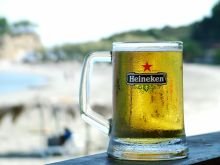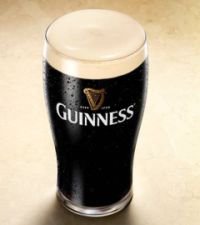Beer Companies Hopping into Social Media – Part 1, Big Brands
Whether it’s the long established (1759) mega brewer Guinness with its worldwide celebrations of Arthur’s Day (for founder Arthur Guinness) and fan page attracting over 276 thousand “likes” or the much younger (est. 1991), much smaller New Belgium Brewery of Fort Collins CO with – at this writing – a very competitive 191,167 “likes”, it’s clear that brewers large and small are embracing social media with gusto.

Why I spent probably far too much time in the past week researching this subject
Just over a week ago I was asked what I knew about beer companies using social media. Knowing nothing about the subject at that point, my response was “I’ll get back to you”.
I thought, just a few enquiries and I’ll have something to share.
Little did I know how much there was to know and how many questions I was in the process of generating for myself!
Because, while I freely acknowledge that I’ve never had to have my arm twisted to savor a good ale, pilsener or the occasional stout, the fact is I don’t profess to any serious knowledge of the brewing and beer marketing industry.
Crowdsourcing to the rescue
 In response to some online enquiries, a number of people around the world have shared generously with knowledge and links, especially by way of responding to a question I uploaded to LinkedIn Answers.
In response to some online enquiries, a number of people around the world have shared generously with knowledge and links, especially by way of responding to a question I uploaded to LinkedIn Answers.
And I have now come to realise this is a huge industry – according to Wikipedia a 294.5 billion dollar one worldwide – with a number of very large, dominant companies and many thousands of smaller regional and local brewers.
So how engaged, or not, are these companies, via social media?
The short story is that I have a lot of facts, but only the beginnings of a bigger picture.
Too much information for one post
The number of examples I’ve been given, of brands and their social media engagement, has grown to the point where the blog post I originally envisaged as a quick overview with some examples, has had to be split into two – this one focused on big companies and a second post on smaller ones.
Examples of social media engagement by big, global companies
Please note that this listing does not pretend to be in any way comprehensive, either in terms of companies and brands or in terms of the examples mentioned of social media engagement. Comments providing further examples will be welcome.
Heineken
 The Heineken social media story is particularly interesting from a social media strategy viewpoint because there are available:
The Heineken social media story is particularly interesting from a social media strategy viewpoint because there are available:
- a media release, on the occasion of Heineken’s signing a deal with Google, that gives some insight into the company’s strategic thinking about social media – specifically “to reach our target groups of 20-somethings”
- an interview with Cees van Lede, Chairman of the Supervisory Board of Heineken NV, who talks about social media in terms of corporate decision making and a “substantial shift” in strategy: again, targeting social media “because that’s where the younger generation, today’s generation, spends their time”.
MillerCoors
This company was suggested as worth looking at.
According to a blog post I read today, the MillerCoors corporation itself is not directly involved in social media but its SABMiller and Molson Coors Brewing companies are.
I’ve found it a bit frustrating to get any clear idea of the SAB Miller social media story, but there is clear indication that there is a story. For example, a blog post I read today highlighted the fact that SAB Miller is one of only 7 of the FTSE 100 companies to have an active presence on all four nominated social networking channels, Twitter, Facebook, YouTube and blogging.
And with that indication of SABMiller having a pro-active approach to social media, I’m quite tantalized by what the story might be about SABMiller, social media and the best selling beer in the world, Snow – a China brand owned by SABMiller. Again I’m confident there is a story there, given the extent of social networking in China, with something like 221 million blogs, 117 million BBS and 176 million social network users (blog post from presentations at last year’s SXSW).
 As to Molson Coors, at the Socialbrite.org site there is an interesting blog post, 4 examples of corporate social responsibility done right, on the company’s social media endeavours and the issue of responsible drinking. In his book Twitterville: How Businesses Can Thrive in the New Global Neighbourhoods, author and social media specialist Shel Israel devotes several pages to stories of how Molson “uses generosity as a key component of its social media strategy”.
As to Molson Coors, at the Socialbrite.org site there is an interesting blog post, 4 examples of corporate social responsibility done right, on the company’s social media endeavours and the issue of responsible drinking. In his book Twitterville: How Businesses Can Thrive in the New Global Neighbourhoods, author and social media specialist Shel Israel devotes several pages to stories of how Molson “uses generosity as a key component of its social media strategy”.
Budweiser

The Budweiser “Bud House” project, via YouTube for the FIFA World Cup 2010, drew over 4 million views on YouTube and 1 million plus likes on Facebook.
The Budweiser Facebook page, with its 1,231,042 likes, is quite active, with contributions from fans predominating, rather than the corporate promos and attempted “conversation starters” from the company, as are noticeable on some other big brewers’ Facebook pages.
A couple of people in Ireland mentioned Budweiser, with reference specifically to the Budweiser Ice Cold Ireland beer promotion and a “Budweiser blogger outreach” exercise in 2009.
Guinness
 Guinness have had an apparently very successful social media powered engagement from 2009 on, with its Arthur’s Day celebrations (video link). Proceeds go to “social entrepreneurs” around the world, which is an interesting aspect in terms of a “giving” component of a social media strategy – compare the Molson Coors support for responsible drinking, mentioned above.
Guinness have had an apparently very successful social media powered engagement from 2009 on, with its Arthur’s Day celebrations (video link). Proceeds go to “social entrepreneurs” around the world, which is an interesting aspect in terms of a “giving” component of a social media strategy – compare the Molson Coors support for responsible drinking, mentioned above.
From a strategic viewpoint, there is a very interesting video interview from that first Arthur’s Day year, 2009, by Irish social media expert Krishna De with Grainne Wafer, Head of Marketing for Guinness in Ireland, looking at the bigger picture of the company’s social media engagement, helpfully recorded in bullet points by Krishna in the accompanying blog post.
 Carlsberg
Carlsberg
In Belgium, Carlsberg created an app called Tournée Digitale (Digital Tour), which encourages users to step away from their computers and meet their friends in person and share beers instead of links. Via Simply Zesty.
 Corona
Corona
I hadn’t previously come across the Yomego Social Media Reputation Index, for which I was pointed to a top 50 companies in a “snakes and ladders” image – Corona is the only beer company included there, for what that’s worth (I don’t know the date that infographic was done or when it was uploaded, but as at February 2011 Corona was listed on the same “league table” at 49 out of the 50.)
XXXX
 The number two beer in Australia and number one in the northern state of Queensland, XXXX (“Fourex”) is a beer produced by Castlemaine Perkins, not itself a global company, but owned by Lion Nathan, which is a subsidiary of Lion Nathan National Foods, itself fully owned by Japan’s Kirin Holdings Limited, and thus part of the definitely global Mitsubishi keiretsu.
The number two beer in Australia and number one in the northern state of Queensland, XXXX (“Fourex”) is a beer produced by Castlemaine Perkins, not itself a global company, but owned by Lion Nathan, which is a subsidiary of Lion Nathan National Foods, itself fully owned by Japan’s Kirin Holdings Limited, and thus part of the definitely global Mitsubishi keiretsu.
XXXX used the Holler agency to develop a site to build connection with fans in an “ongoing and sustainable way”. A video explains how this was done, aggregating content from sites such as YouTube, flickr, Twitter and blogs and with a community manager serving content. Results in 2009 alone included 1 million visits to the main site. Of particular interest is that the video outlines the specific steps in developing the strategy.
A few general observations
Although I still don’t have a clear big picture view (and haven’t yet found anyone who claims to have that), a couple of things seem pretty clear:
- of the several big corporations in this industry, at least some are investing deliberately and strategically in social media
- the big brewers have deep pockets to finance national and even global socially-empowered campaigns
My impression, admittedly quite subjective at this point, is that big brewers pursuing social media engagement seem to focus their social media efforts more on campaigns and events rather than on the building, care and maintenance of genuinely interactive, long-term relationships. That’s probably understandable and for the most part not atypical for how big corporations in any industry are using social media, compared with the smaller companies.
More on the smaller brewers in the post to follow. In the meantime, in case I’ve not yet heard of your pick for a good story about social media and small breweries, please share the link in the comments here and I’ll check it out.
My thanks to all the people who shared links and leads for this topic, especially the twenty four people who responded to my question on LinkedIn Answers.
Image credits:
Heineken by md-2 CC BY 2.0
Molson Canadian Sixpack by Like_the_Grand_Canyon CC BY 2.0
Pint of Guinness – Stephen Edgar – Netweb CC BY-SA 2.0
Corona Extra Tim Hill CC BY-SA 2.0
XXXX bitter Jeremy Eades CC BY-SA 2.0
Des Walsh
Business coach and digital entrepreneur. With coach training from Coachville.com and its Graduate School of Coaching, and a founding member of the International Association of Coaching, Des has been coaching business owners and entrepreneurs for the past 20 years. Over the same period he has also been actively engaged in promoting the business opportunities of the digital economy. He is a certified Neurolinguistic Programming (NLP) coach, and a certified specialist in social media strategy and affiliate marketing.
Excellent post, thank you very much!
Many of the beer brands are still putting up crappy event pictures taken of their last weekends event or asking their fans “what’s up for the weekend folks?’.
The current Social Media norm is that the “Big Idea’ is ‘out’, a more organic collection of stories is in, ideally user generated.
However, I see huge potential in some of the classic campaign ideas, for instance Heineken’s “reaches parts other beers can’t reach’, if they are updated to a new generation of beer drinkers.
As a brand strategy, Heineken for instance has decided a couple of years ago to focus more on the product and less on the emotive part of the brand – and the trend for craft beers supports that.
However, when it comes to product credentials, there is only so much you can say, and it is really hard to make that relevant in a social media space. Try getting people to forward your ‘credentials’ ad. It’s difficult, not impossible as Guinness has shown over time, but difficult.
Consequently, the challenge that agencies have is the same as it has always been: How to give a product cultural relevance? How to earn a place in social media. How to keep creating the vitality of the brand?
Where many social media specialists will advocate a stream of stories, and many of your examples show smaller initiatives, I still see the power of a good brand idea, translated in a good campaign idea that has legs and cultural relevance.
So even though, Heineken is now buying direct from the digital media owners, to earn the right to be there has to come from the people that understand their users, their culture and tribes: big idea people who are in touch with the users’ culture.
Erik
That’s a great comment and I acknowledge the value of your observation about “the power of a good brand idea, translated in a good campaign idea that has legs and cultural relevance”. At the same time, and no doubt influenced by currently reading Gary Vaynerchuk on the Thank You Economy, I feel the smaller brands have, on the face of it, an advantage with social media, in that it is probably going to be easier for them than for the bigger brands to show they actually care and to build a sense of community.
As Vaynerchuk says, and I find it persuasive, “At its core, social media requires that businesss leaders start thinking like small-town shop owners.” Later in the book he observes “The Thank You Economy works when you build a sense of community around your brand, not when you simply sell to it.”
Not that big brands can’t achieve that sense of community. Just that, in my view, it’s likely to be a whole lot harder for them to sustain. Or maybe needing some very sophisticated strategy and very committed and supported people.
Yes, the eternal paradox of global brand marketing: be big – larger then life in some cases – but feel small and relatable. Not many marketers have cracked the paradox. It’s about touching on a value universal enough to transcend borders, but by means of an execution that is relevant and relatable locally, even in local micro cultures.
Many CMO’s are grappling with ‘consistency issues’, afraid to let go and hand more authority to local teams. I have worked – not too long ago – for companies that had each and every piece of advertising execution approve centrally. This is clearly impossible in this space.
Hence, the need for an empowered local team, because, as you rightly say: it is easier to build a sense of community.
My observation is that with many beer brands it is lacking energising ideas and stories. The community is really the community of the brand manager and his team, not the community of the brand.
Nice distinctions, Erik. Maybe, as in Tip O’Neill’s classic phrase “all politics is local”, for big brands to succeed in this new socially-defined space they need to consider ways, as you suggest to empower an “all advertising is local” approach?